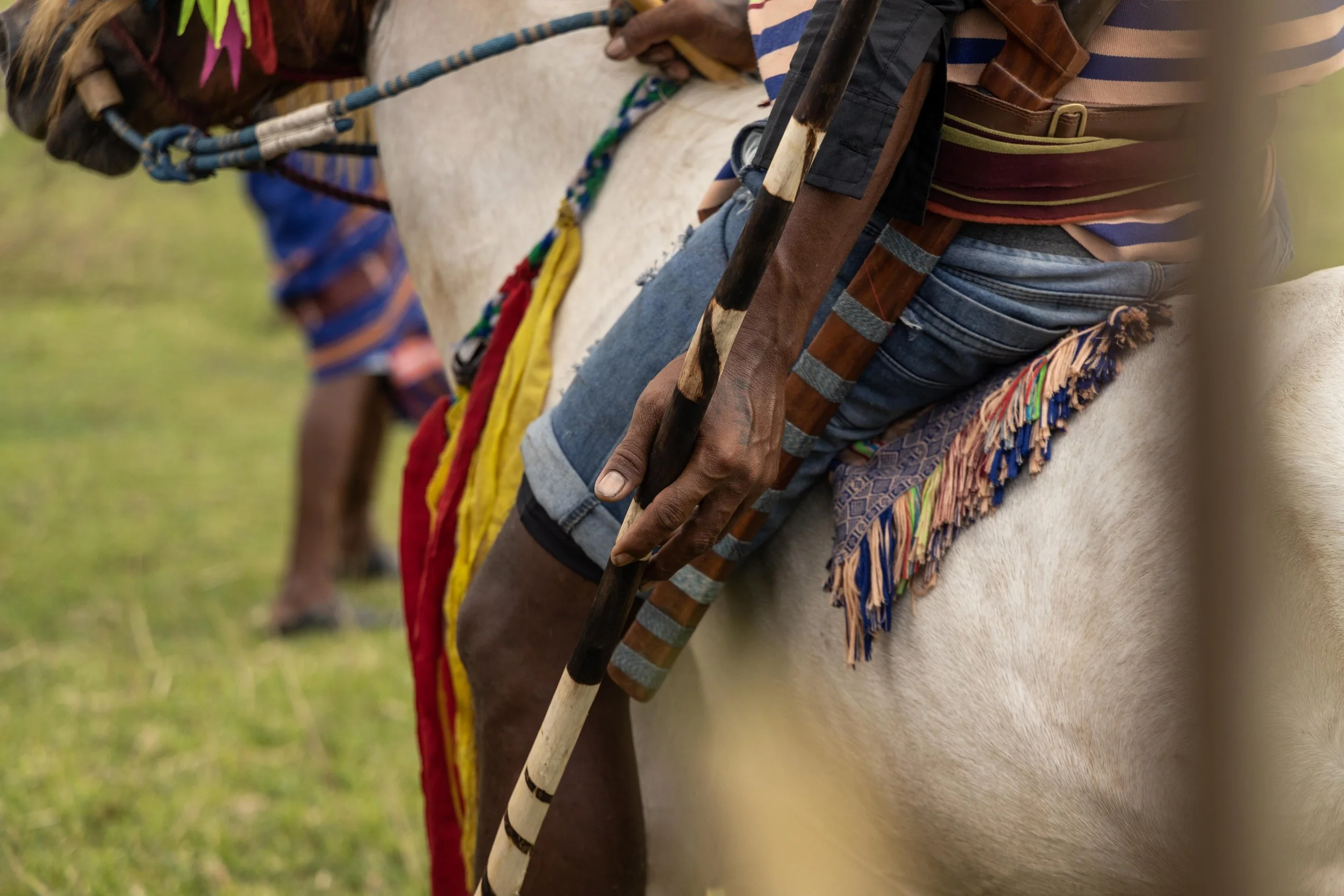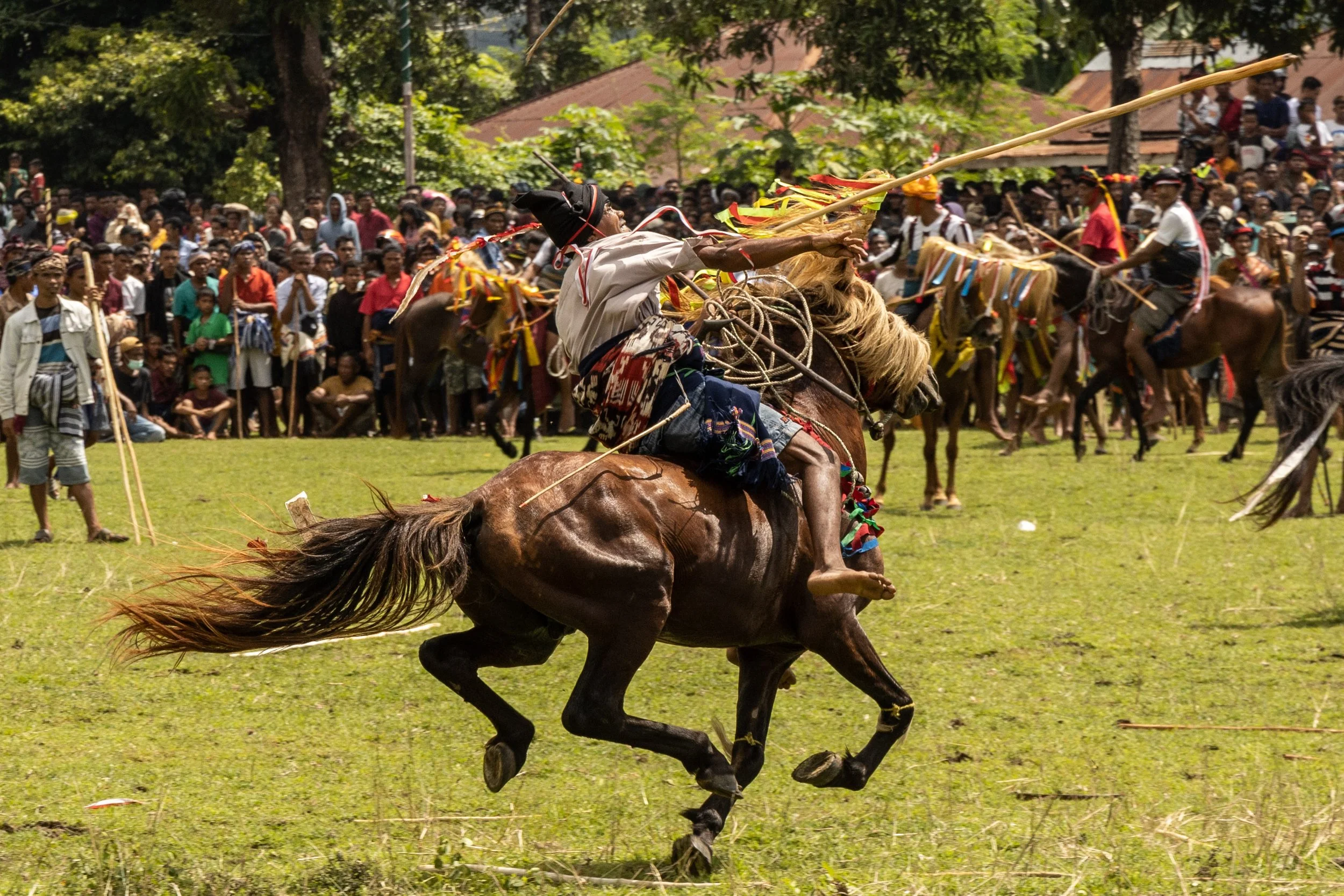











































The Pasola Wars
On the Indonesian island of Sumba, where the landscape is a patchwork of rolling savannas and limestone cliffs, an ancient ritual takes place. Every year around February and March, as the arrival of sea worms—known as nyale—signals the changing of seasons, warriors on horseback fight across an open field, throwing wooden spears against one another in a ceremonial battle known as the Pasola.
More than a test of skill and bravery, the Pasola is deeply embedded in Sumbanese tradition, an offering to the Marapu, the island’s ancestral spirits, meant to ensure prosperity and agricultural fertility. Blood must be spilled—human or animal—for the land to be nourished. The warriors, adorned in their ikat textiles, move with intention, their lances flying through the air as the crowd watches, enthralled by the spectacle of choreographed chaos.
The ritual begins when village elders, guided by shamans, determine the right moment based on the appearance of the nyale, creatures whose abundance or scarcity is believed to predict the community’s fortunes. The battles themselves are intense but structured, governed by rules passed down through generations. Though once fought with sharp-tipped spears, today’s Pasola features blunted weapons, a concession to modern safety concerns imposed by Indonesian authorities. Yet injuries—and occasionally fatalities—are still considered part of the ritual’s sacred weight.
For the people of Sumba, the Pasola is so much more than a relic of the past. It remains a cultural touchstone, a public expression of identity, resilience, and reverence for the forces that shape their world. In an era where globalization and modernization threaten to erode Indigenous customs, the Pasola endures, standing as a testimony to a belief system that sees the land, the sea, and the spirit world as deeply intertwined.